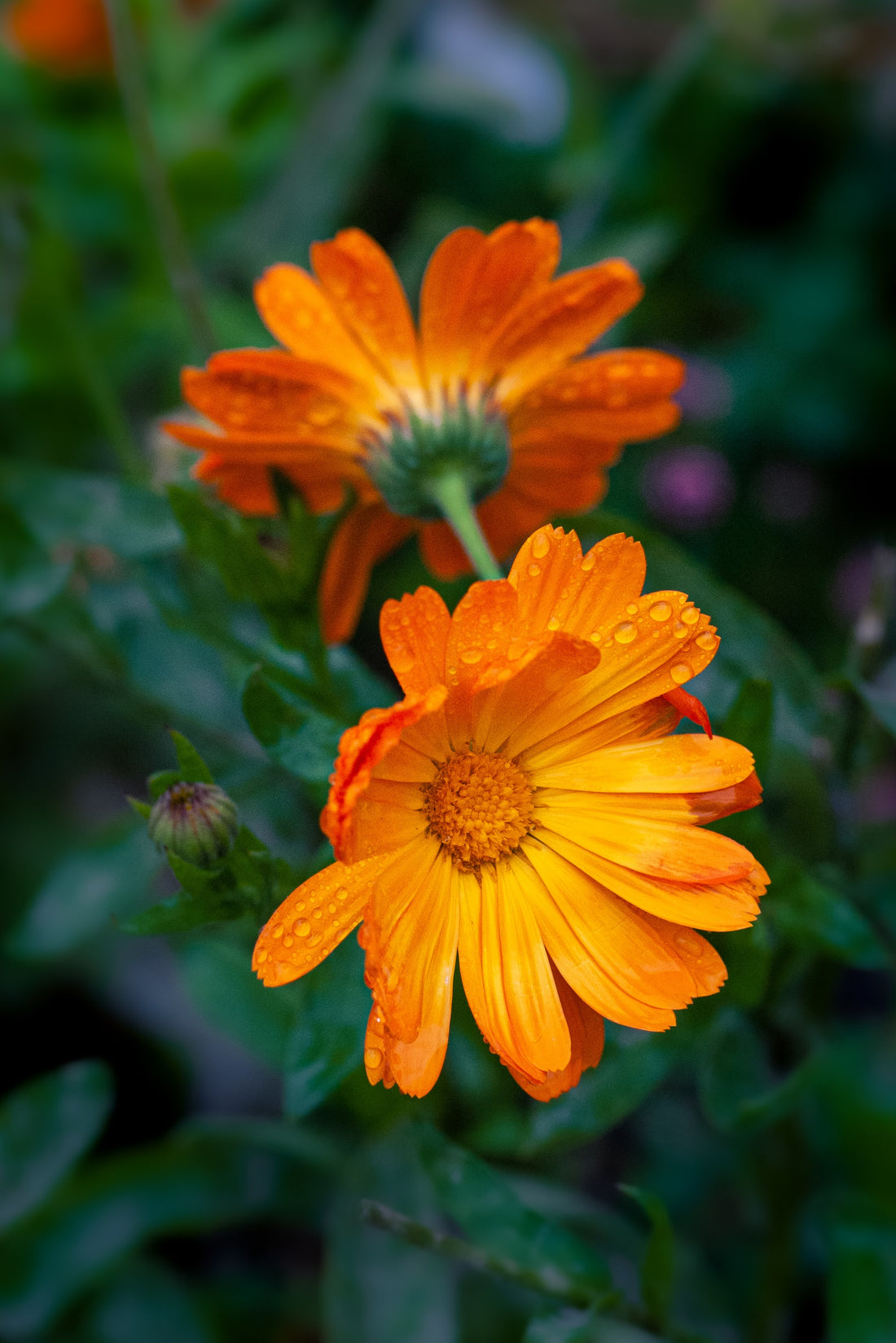Quick growing and a joy to watch bloom, Calendula is a popular and reliable garden flower. Calendula flowers are sunny and bright and add a definitive pop of color the landscape, plus they're edible! They look especially striking planted in large groupings.
Favorite Calendula Varieties
Orange Pacific Beauty - Orange double-blooms
Apricot Pacific Beauty - Light apricot colored double-blooms
Dwarf Pacific Beauty -- Orange and yellow flowers, 12" tall
Cream Pacific Beauty - Butter yellow and cream colored bi-color flowers
All About Calendula
Calendula is often mistaken for marigolds for a couple of reasons. Calendula is commonly referred to a Pot Marigold, Poet's Marigold, or English Marigold. This makes the naming very confusing. Plus, they look alike, with bright orange or yellow flowers. True Marigolds (Tagetes) are distant relatives of Calendula.
Originally, calendula flowers were only single blossom and available as orange or yellow. However, over the years, many new hybrids have been cultivated. Now, they are available in shades of orange, yellow, red, apricot, and bi-color and as double blooms, and dwarf and tall varieties.
Calendula flowers bloom atop a thin green stem. The petals are spoon-shaped, rather daisy-like, and have notched tips. Leaves are medium-green and fuzzy on both sides. The foliage grows lower down on the stems; the flowers look they are floating above the greenery. Calendula plants grow 1-1.5 feet tall and have many branching stems.
The flowers are edible and add a nice lightly spicy honey flavor, though some folks think they're too bitter. Fresh flowers are generally mild tasting, but once dried, the flavor intensifies. Dried calendula flowers have been used as a light-yellow dye for centuries, too. They're used to dye fabrics, butter, cheese, and soup. Extracted oil from calendula are used in beauty and medicinal products to treat dry skin, burns, rashes, and cuts.
How To Grow Calendula
- Sow seeds directly in the garden after all danger of frost has passed.
- Plant in full sun in well-draining ground.
- Drop a few seeds every 6” and cover lightly with 1/4” soil.
- Water lightly but thoroughly, so the ground is completely moist, but the seeds aren't disturbed.
- Sprouts will appear in 7-10 days.
- Flowers will bloom in 6-8 weeks.
- Sow seeds every 2-3 weeks in spring for consecutive displays



